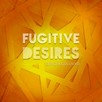Item details
-
Description +
-
Duration: 6 min.
Sound extract performed by Steve Falk
The idea for this piece came to me during a recording session. I was improvising on my marimba, creating music for a short film about an old shop in Errol Street North Melbourne. Later I developed that idea into a solo marimba piece. As with most of my music, there were notated sections and parts that could be improvised, also. After performing Errol Street I decided to produce this final version, which is fully notated, including the sections that were previously improvised.
It is important that the music sounds spontaneous. To help determine how you will interpret the piece during your performance, I recommend experimenting with playing each phrase in a variety of different ways during practice.
Errol Street could be performed with one or more percussionists accompanying the marimba from bar 77 until bar 113. Cajon or frame drums could be suitable. From bar 124 percussion could again be added. This time playing sparse, unusual, sustained sounds such as gongs, temple bowls or bowed cymbals. Bars 124 to 127 should sound a little disturbed, disrupted and uneasy.
This piece is dedicated to my dear friend Therese Ng who gave the premiere performance in Melbourne 2017.
-
-
Instrumentation +
-
Marimba (5-octave)
-
-
Watch+
-
Performed by Therese Ng (marimba) and Yu Koga (percussion)
-
-
About the composer +
-
Possessing an interest in music of all genres and origins, Australian percussionist and composer Steve Falk embraces the process of creating new works with artists of varied disciplines and traditions. Such works predominantly feature the marimba.
Steve is currently a member of Nunique Quartet and Ensemble Density and has appeared with the Melbourne Guitar Quartet, Speak Percussion, Chamber Made Opera, Bolt Ensemble and with numerous leading contemporary improvisers both in Australia and Japan, where he lived between 2005 and 2011. Steve has been commissioned by Museums Victoria to write for the Federation Handbells and his piece ‘Welcome’ has been performed in Melbourne at Federation Square as part of the Light in Winter Festival and for the arrival of the Inflatable Refugee - an enormous travelling artwork highlighting the global refugee crisis. At the Dance Triennale Tokyo 2009, he performed Drumming by Steve Reich in the production La Vie Qui Bat by Canadian dance company, O Vertigo. Along with fellow Australian Andy Bevan, Steve formed the world music duo ‘Duality’ and performed at Kamigamo Shrine, a world heritage site in Kyoto in 2010. They subsequently collaborated with Shonosuke Okura (master Otsuzumi player of the Noh Theatre tradition) and Slava Grigoryan (guitar) to create Four Winds for the OZAsia Festival at the Adelaide Festival Centre.
Steve has played percussion with the Melbourne, Queensland and Tasmanian Symphony Orchestras, Orchestra Victoria and Orchestra Ensemble Kanazawa (Japan). He has worked for many musical theatre productions, including Mamma Mia! and We Will Rock You. As musical director of the popular Australian dance show Tap Dogs, he travelled to New Zealand, Japan, China, Korea and India.
He attended the Victorian College of the Arts Secondary School, Victorian College of The Arts, Queensland Conservatorium of Music and Toho Gakuen College of Music (Tokyo) where he studied with Keiko Abe. Steve currently teaches percussion at The University of Melbourne and Monash University. He chooses to play Yamaha percussion instruments and proudly performs on a YM6100 Marimba.
-
-
Reviews +
-
Review (Percussive Notes, October 2021)Spontaneity is a difficult feeling to capture within non-improvised compositions, yet “Errol Street” has several moments that swirl together to create a stream-of-consciousness effect within the marimba solo that blends ideas seamlessly. Steve Falk avoids a typical permutation-driven solo to find a nice balance between idiomatic patterns, light melodies, and strong attacks. Anchoring the piece around rhythmic figures and short, recurring motives, “Errol Street” has beautiful moments and multiple opportunities for performers to create their own vision.Falk includes very few instructions regarding style or dynamics, leaving multiple choices up to the marimbist, helping to solidify the impulsive nature of the solo. Influences from other improvisational composers, like Keiko Abe and Eric Sammut, peek through at times, but Falk’s style in this composition is not one of imitation, but manipulation from one theme to another.Falk’s solo never sits in one style for too long — at least in the first half — constantly shifting to a new feel or transitioning to a run up and down the keyboard; however, midway through the piece, a quasi-funk beat is created using a syncopated rhythmic ostinato. Falk even suggests the addition of extra percussion here to support the style. This larger section seems out of place compared to the rest of the piece, which shifts quickly and relies on fast-moving lines and short melodicmotives.The work disintegrates after that, with a reprise of the opening phrase to finish off the piece. At around seven minutes in length, this would make for a good senior or graduate recital piece if you are looking to find something a little out of the norm.—Matthew Geiger
-
-
Credits +
-
Front Cover graphics and layout: Gaia Rodrigues
Photo: Nobuyuki Kobayashi
Engraving: Steve Falk & Johan Svitzer
Printed in Copenhagen, Denmark
Copyright © Edition SVITZER
www.editionsvitzer.com
-






